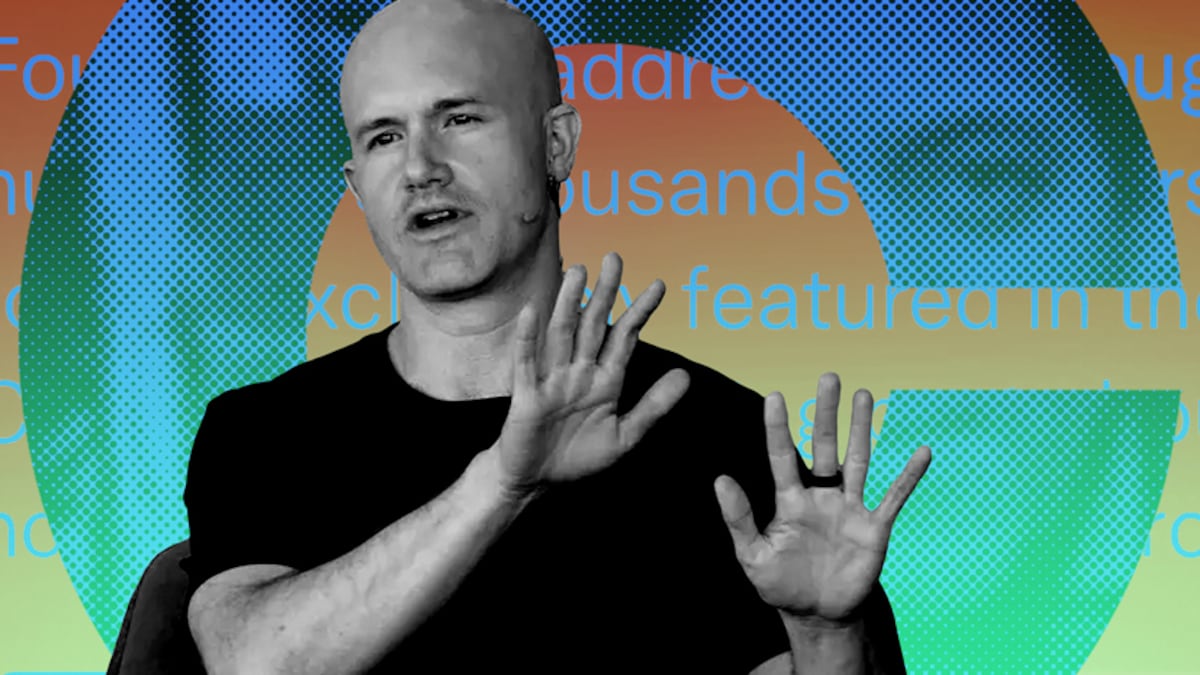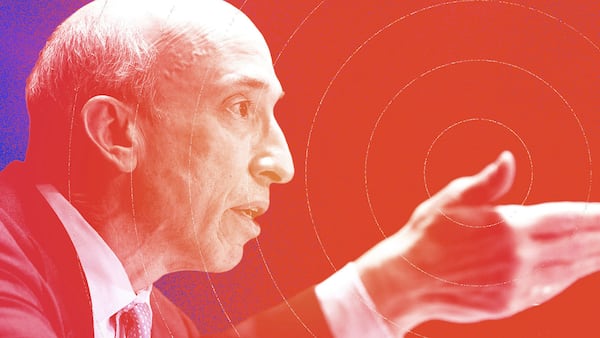Short selling legend Jim Chanos says he sees an opportunity in his bearish bet against Coinbase, even as shares of the crypto exchange surge.
“Our story is simple,” Chanos told DL News. “COIN is charging its retail customers unsustainably high fees/commissions, but is still losing money. And in the quarter just ended, with crypto prices up 50% to 70%, they will still lose money! If not now, when?”
Chanos, who shot to fame by first sounding the alarm about fraud at Enron decades ago, says he has been short Coinbase since the first quarter of 2022, when the stock was as high as $250. The shares are trading at about $69 now.
NOW READ: Fidelity may beat hiring goal for a 500-strong crypto unit in sign of finance land grab
While Coinbase says it charges a flat 1% transaction fee, Chanos calculates a fee structure that ends up much higher.
The short seller worked out that Coinbase, which makes the bulk of its revenue from a shrinking base of retail traders, charged its consumers 5.2% on their assets in the form of commissions and fees in the fourth quarter at an annualised rate. He extrapolated the figure from Coinbase’s fourth quarter income statement.
The crypto exchange posted a net loss of $2.6 billion last year.
“Imagine Schwab or Fidelity charging its retail customers 5% per year on their assets,” he told DL News. “Do you realise how insanely high that vig already is?,” Chanos tweeted in February, using a slang term for interest paid on a loan.
In a nod to his sceptical investing stance, Chanos tweets pseudonymously under the name Diogenes, after the Greek philosopher Diogenes the Cynic. The name of his firm, Kynikos Associates, is another homage to the ancient cynics.
NOW READ: Stablecoins and Binance next in SEC crosshairs after Coinbase warning
“Coinbase is a high-fee extracting model, in a financial world designed to ruthlessly deflate such fees,” he wrote in a tweet. “And the bigger problem, of course, is that $COIN’s annualised costs are still running at 10% of average retail assets!”
Coinbase did not return a request for comment. In a bid to trim costs, the exchange cut employee ranks by 20% in January, following an 18% job cull in late 2022.
”We’re not going to be taking further expense actions,” Coinbase Chief Financial Officer Alesia Haas told analysts in February. “But we are prepared to do so if we start to see it result in a scenario where we could not improve EBITDA year over year.”
Haas fielded analysts’ questions about retail fees in the same call: “We have not seen pressure to reduce our fees on the retail side. But we do think as a medium-term phenomenon that we’ll see commoditisation and need to reduce fees at a future point. And I don’t know when that future point is.”
Coinbase, one of the few publicly traded crypto firms, has more than doubled this year, tracking an almost 80% rally in Bitcoin. It’s a proxy for crypto sentiment in general, and has mimicked a so-called meme stock, where retail traders pile into their favourite names to squeeze short sellers.
Does Chanos worry about investors who set fundamentals to the side and send stocks soaring? “Fundamentals being ignored is the opportunity,” he told DL News.
NOW READ: Silvergate short seller says he’s betting against Signature: ‘Binance is next’
Coinbase took a hit almost a year ago following the collapse of Terra, which kicked off a collapse in crypto markets. Investors have fled the sector amid a banking crisis that has taken down crypto-friendly lenders Silvergate, Signature, and Silicon Valley Bank.
The company faces other hurdles. Coinbase makes interest income from customer deposits of the stablecoin USDC, which is pegged to the dollar. In the fourth quarter, Coinbase posted interest income of $146 million, double that of the same period in 2021.
“The damage from Silicon Valley Bank lingers,” Morningstar wrote in a March 31 report. While government bailouts made the banking crisis of earlier this year short-lived, “the event has done some lasting damage to USDC.”
As clients redeemed their USDC for cash, Morningstar noted, the number of coins in circulation has plunged to about $32 billion from some $43 billion at the start of March.
“The reduced amount of USDC will lead to reduced interest income for Coinbase, and it is unclear if or when USDC will recover, costing Coinbase a reliable source of income in a difficult cryptocurrency market,” wrote Morningstar, which reduced its price target for the stock to $80 from $90.
USDC interest income helped Coinbase beat analysts’ estimates in the quarter. Still, more than a year ago, Chanos warned: “The real long-term issue for Coinbase is just how much they are over-earning on client assets.”





